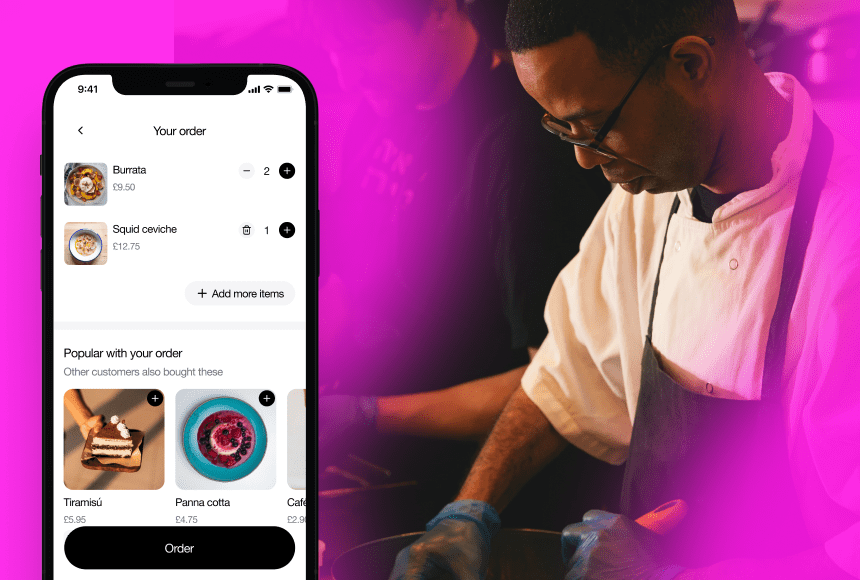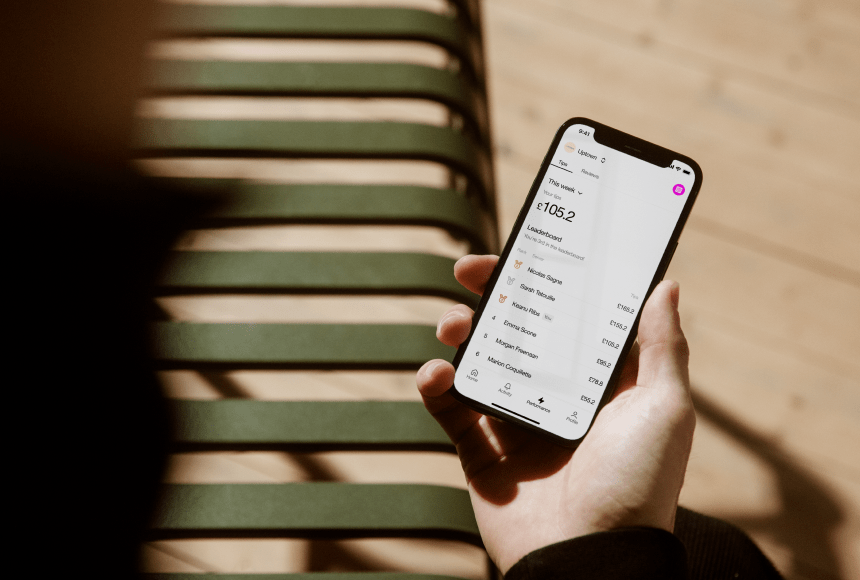
Simple Strategies to Encourage Bigger Orders and Happier Diners
Rethinking How Diners Interact with Your Menu
Restaurant owners know that increasing the average ticket size (or “basket”) can significantly boost profitability. You already have a welcoming atmosphere, a great menu, and a solid team—so what’s the next step? Many restaurants are finding that tableside ordering, a system where guests can scan a QR code or use a handheld device to place orders directly at the table, unlocks new ways to tempt diners into spending a bit more.
But to see tangible results, you’ll need more than just a fancy device or a QR code on the table. It’s about using technology and good old hospitality together to create an irresistible dining experience. Below, you’ll find five practical strategies that can help you harness the power of tableside ordering to increase average spend—without resorting to pushy sales tactics.
1. Craft a Visually Appealing Digital Menu
One of the biggest advantages of tableside ordering is the ability to display dynamic, colourful, and detailed menus—far more engaging than a static piece of paper. Attractive visuals can be the secret sauce that convinces diners to try something new. Think mouth-watering dish photos, short videos of sizzling steaks, or playful icons indicating spice levels.
Why it works:
- Immediate Impact: People often eat with their eyes first. A delicious-looking image can trigger an instant craving. You might see guests adding a side dish they wouldn’t have considered if they’d only read a short text description.
- Less Guesswork: Clear photos and concise descriptions help customers feel confident in their choices, which can encourage them to be more adventurous.
- Easy Updates: Digital menus allow you to highlight seasonal items or new specials instantly. No need to reprint materials. If you run out of one dish, you can remove it in a few clicks—reducing frustration and wait times for everyone.
Some restaurants even feature short chef notes or behind-the-scenes photos: a local farm where produce is sourced, or a quick snap from the morning’s pastry prep. These small touches add storytelling to your menu, making each dish more personal—and potentially more lucrative for you.
2. Make Customisation Easy and Enticing
Diners love customising meals. Maybe they’re looking to add extra avocado to their burger or switch out a side salad for sweet potato fries. When you’re using tableside ordering, customisation becomes more transparent and straightforward: just a tap of a button can let a guest choose add-ons, swap out ingredients, or switch to premium upgrades. The system calculates new totals automatically, so there’s no awkward last-minute confusion for your servers.
Why it works:
- Empowers Diners: Customers appreciate the control and clarity. They see how much extra an ingredient costs and can decide if it’s worth it—which often it is.
- Encourages Upsells: If you design your digital menu with well-placed prompts—“Add bacon for £1?”—some diners will find it hard to resist. Over time, these small extras add up across your business.
- Minimises Errors: Because diners choose directly from a digital menu, there’s less chance your server will mishear or forget a custom request. Fewer mistakes mean happier guests and a more efficient workflow.
By giving diners an immediate glimpse into what each addition or swap entails, you reduce friction and build trust. They know you’re being transparent about prices, and you show that your restaurant is ready to cater to individual tastes.
3. Spotlight Your Best (and Most Profitable) Items
Did you know that placing specific menu items in prime digital real estate can subtly steer customers toward them? If you want to boost the average spend, highlight the dishes that offer solid profits—like signature cocktails, premium steaks, or unique desserts. Tableside ordering interfaces often let you categorise and feature certain items as “recommended” or “chef’s picks.”
Why it works:
- Visual Hierarchy: If an item is displayed prominently or has a glowing review next to it, people are more likely to click. Don’t underestimate the power of strategic layout.
- Limited-Time Specials: When something is flagged as a “special” or “only available today,” diners feel a sense of urgency. FOMO (fear of missing out) can drive sales effectively.
- Encourages Add-Ons: Pair premium items with suggestions for wine, extra toppings, or side dishes. For instance, a “recommended pairing” pop-up could introduce guests to a more expensive wine than they would have ordered otherwise.
Don’t forget to gather feedback: check which featured items are actually performing well and which might need adjustments. Over time, data from your tableside system can reveal which approaches push the average spend highest, so you can refine your tactics.
4. Personalise with Timely Prompts and Friendly Nudges
No one wants to feel bombarded by upsells, but well-timed suggestions can make guests feel looked after. For example, if diners have been seated for half an hour, your system might send a gentle on-screen suggestion: “How about some starters while you decide?” or “Ready for a top-up on your wine glass?” The key is to keep these nudges friendly and unobtrusive, not pushy.
Why it works:
- Anticipates Needs: A well-designed table ordering flow identifies typical decision points—like when a guest might be thinking about dessert or a second drink—and presents the option at just the right moment.
- Elevates Hospitality: These prompts can free up your servers from constantly checking in, ensuring they offer help only when it’s needed or welcomed. Guests who want an extra drink get it quickly, without feeling ignored.
- Drives Revenue Subtly: Suggestive selling can be more effective when it’s couched as a service. “May we tempt you with our homemade chocolate fondant?” feels gracious, especially if the item looks divine on the digital menu.
Restaurants that use sunday often find these prompts easy to configure. Guests simply tap a few buttons to add another round, and your team sees the request instantly. Your staff remains present to answer questions, but the impetus to reorder can come directly from the guest’s phone.
5. Seamless Payment and Tipping Integration
Even with the best menu and perfect timing, a fussy or slow payment process can negate some of the goodwill you’ve built. Tableside ordering systems that integrate seamless payment—via QR code, contactless, or mobile wallet—can further increase revenue by making it easier for diners to complete their checkout on a positive note. And guess what? That convenience often leads to higher tips, too.
Why it works:
- Smoother Checkout Experience: The faster and simpler it is to pay, the more satisfied your guests tend to be. A good final impression can encourage them to tip well, or even come back soon.
- Tip Suggestions: A discreet prompt might read, “Thank you for dining with us! Feel free to leave a tip if you enjoyed your experience.” People are more likely to tip when given a gentle nudge and clear options.
- Eliminates Waiting for a Card Machine: The days of waiting for staff to bring over a card reader are gone. Guests can finalise the bill on their device and move on if they’re in a rush, while your servers can focus on providing top-notch hospitality to other tables.
Payment is often the last touchpoint with your restaurant. Ensuring that it’s not a hassle—and even doubling as an opportunity to reinforce good feeling—can boost your reputation, your team’s tips, and your bottom line.
Bringing It All Together
Increasing your average spend isn’t just about prodding customers to order more—it’s about crafting an environment where they feel excited to explore, customise, and indulge. Tableside ordering, when executed well, combines an intuitive digital interface with the warmth of personal service. By drawing on vibrant visuals, gentle upsells, and transparent pricing, you make it easier than ever for diners to treat themselves.
According to a BigHospitality report, consumer spending habits in the UK are shifting, with digital and mobile solutions becoming a key factor in how diners choose where to eat. It’s not enough just to have tasty food and good reviews—people want convenience and speed to match the modern pace of life.
By following these five best practices—crafting an engaging digital menu, encouraging customisation, spotlighting profitable dishes, using timely nudges, and offering frictionless payment—you position your restaurant to stand out. These adjustments don’t just boost immediate sales; they also enhance loyalty, reduce service bottlenecks, and keep your team smiling. After all, happy diners tend to order more, tip better, and spread the word about your establishment.
Ultimately, tableside ordering should feel like a natural extension of the hospitality you already provide. With the right system in place, you can unlock all sorts of benefits—from simpler staff training to faster table turnover—while ensuring your customers remain centre stage. And when diners feel relaxed, informed, and in control, they’ll likely splurge a little more on that tempting starter or dessert. It’s the perfect recipe for a higher average basket—and a restaurant experience that keeps people coming back for seconds.
Find out more today
Drop us your details below and we’ll reach out within the next 24
All your orders – in and out.
Our mobile ordering solution allows your customers to order and pay whenever they are ready with an integrated QR code.


